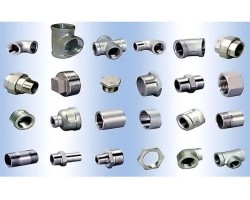Pipe fittings are widely demanded for any piping and plumbing systems used in industrial and commercial applications. Fittings allow pipes to be joined or installed in the appropriate place and terminated or closed where necessary. Fittings are available in various shapes and sizes.
1. Flanges:
Flanges are used to connect pipes, valves, pumps, and other equipment to form a piping system. They provide easy access for inspection, cleaning, and modification.2. Valves:
Valves control the flow of fluids within a piping system. Different types include gate valves, ball valves, check valves, and globe valves, each serving specific purposes in regulating flow.
3. Pipe Fittings:
Fittings connect and control the direction of pipes. Common types include elbows, tees, couplings, and reducers. They play a crucial role in adapting pipes to meet design and system requirements.4. Expansion Joints:
Expansion joints accommodate thermal expansion and contraction of pipes, preventing damage to the system. They help maintain the integrity of the piping system during temperature variations.5. Pipe Supports:
Supports provide stability and alignment to the piping system. They help prevent sagging, misalignment, and stress on the pipes, ensuring the system's longevity and reliability.6. Insulation:
Insulation materials are used to maintain temperature control within the piping system. This is crucial for energy efficiency and preventing heat loss or gain, depending on the application.7. Strainers:
Strainers are installed in piping systems to remove solid particles from the fluid flow. This helps protect downstream equipment such as pumps and valves from damage.8. Gaskets:
Gaskets provide a seal between flanged connections, preventing leaks in the piping system. They come in various materials, including rubber, metal, and composite materials.9. Pipe Hangers and Supports:
These components are used to secure and support pipes, ensuring proper alignment and minimizing stress on the system. They are essential for the overall stability of the piping network.10. Pressure Gauges:
Pressure gauges measure the pressure within the piping system. They are crucial for monitoring and maintaining safe operating conditions.